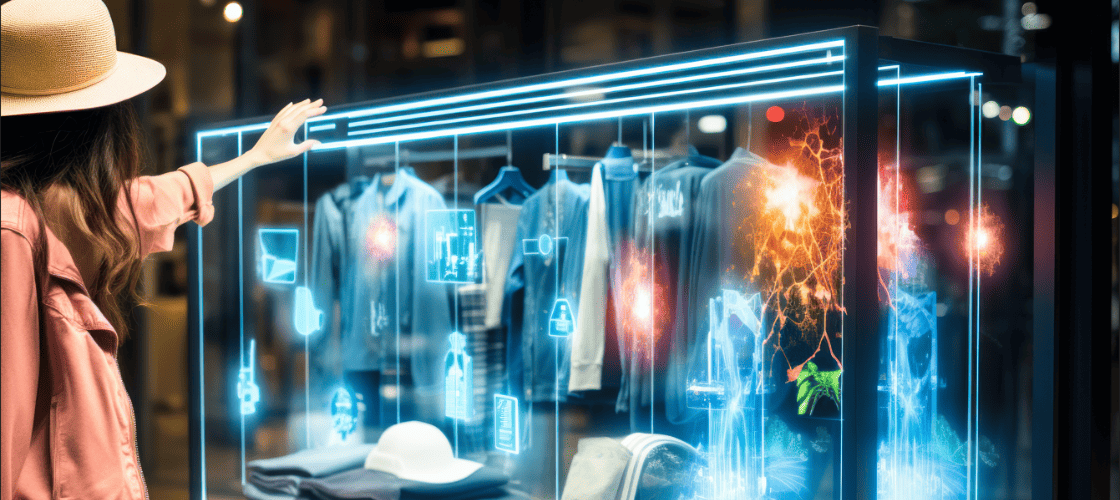In the grand theater of global retail, titans like Walmart, Amazon, Target, Alibaba, The Home Depot, and Costco orchestrate a symphony of strategies that resonate across continents, cultures, and consumer cohorts. This intricate ballet of business acumen unfolds against a backdrop of relentless innovation, shifting societal norms, and the ever-quickening pulse of technology. As we peel back the layers of corporate strategy and market maneuvering, a narrative of ambition, foresight, and resilience emerges, charting the course toward retail renaissance in the digital age.
Global competitive landscape
The global competitive landscape in retail is shaped by a complex interplay of traditional giants, digital disruptors, and innovative startups, each vying for consumer attention and market share across diverse geographies. This landscape is characterized by rapid technological advancements, shifting consumer behaviors, and the blurring of lines between physical and digital retail spaces. Here’s an overview of the key players and dynamics at play:
Traditional Retail Giants
- Walmart: The world’s largest retailer, Walmart, continues to dominate with its massive physical footprint and growing e-commerce platform. Its competitive edge lies in aggressive pricing, extensive product range, and strategic international expansions, particularly in emerging markets.
- Costco: Known for its membership-based warehouse clubs, Costco excels in providing value to customers through bulk purchasing. Its limited selection of high-quality items and low price points, coupled with exceptional customer service, solidifies its position in the competitive landscape.
- The Home Depot: As the largest home improvement retailer, The Home Depot has capitalized on the DIY trend and the booming housing market. It combines wide product offerings with expert services, making it a go-to destination for both professional contractors and home enthusiasts.
Digital Disruptors and E-Commerce Leaders
- Amazon: Amazon has redefined retail with its customer-centric approach, vast selection, and innovation in logistics and delivery. Its Prime membership program and ventures into physical retail, like Amazon Go stores, further blur the lines between online and offline shopping.
- Alibaba: Alibaba Group has transformed retail in China and beyond with platforms like Taobao and Tmall. It leads in digital innovation, mobile commerce, and logistics, significantly influencing retail trends in Asia and globally.
- Shopify: Empowering over a million businesses worldwide, Shopify allows individual sellers and brands to set up their online stores. It democratizes e-commerce, making it accessible to small and medium-sized enterprises and challenging larger retail players.
Innovative Startups and Niche Players
- Warby Parker: By offering an easy online shopping experience for eyewear and a home try-on program, Warby Parker has disrupted the traditional eyewear industry and challenged incumbents with its direct-to-consumer model.
- Glossier: Born from a beauty blog, Glossier has grown into a cult beauty brand by leveraging social media and community engagement, showcasing the power of brand loyalty and digital-first strategies in the competitive beauty landscape.
Global Expansion and Localization Strategies
Retail giants are increasingly focusing on global expansion to tap into new markets, often adopting localization strategies to cater to regional tastes and preferences. Walmart’s acquisition of Flipkart in India and Amazon’s customization of its services for different countries exemplify this trend. At the same time, companies like IKEA adapt product offerings and store layouts to align with local cultures and living conditions.
Technological Innovation and Consumer Experience
Innovation in technology, particularly AI, AR, VR, and IoT, is redefining the retail experience. These technologies enhance online shopping, improve inventory management, and personalize customer interactions, setting new standards for consumer expectations. Nike’s use of AR for virtual sneaker fittings and Sephora’s Virtual Artist app for makeup trials are prime examples of how retail brands are leveraging technology to enhance the consumer experience.
Sustainability and Ethical Practices
Sustainability has become a significant competitive factor, with consumers increasingly favoring brands that demonstrate environmental responsibility and ethical practices. Retailers like Patagonia and Lush lead the way in sustainable practices, from sourcing to packaging, influencing broader industry standards and consumer expectations.
The Omnichannel Imperative
The seamless integration of online and offline channels, or omnichannel retailing, is crucial for competitive advantage. Brands that offer cohesive experiences across multiple platforms, from websites and mobile apps to physical stores, tend to engender greater customer loyalty and engagement. Best Buy’s price matching policy and the use of stores as fulfillment centers for online orders is a successful omnichannel strategy.
In conclusion, the global competitive landscape in retail is dynamic and multifaceted, with traditional retailers adapting to digital trends, e-commerce giants continuously innovating, and startups introducing disruptive business models. The key to success lies in understanding and anticipating consumer needs, leveraging technology to enhance the shopping experience, and maintaining a commitment to sustainability and ethical practices. As the retail sector continues to evolve, agility, innovation, and customer-centricity will define the leaders of tomorrow.
The Global Chessboard: Strategic Expansion and Localization
The retail colossi extend their influence across the global chessboard through a blend of strategic expansion and astute localization. Walmart’s foray into the African market via its acquisition of Massmart and Amazon’s strategic stake in the UK-based food delivery service Deliveroo exemplify a keen appetite for global dominion tempered by local sensibilities. These moves underscore a dual strategy: to cast a wide net over burgeoning markets while weaving the fabric of local commerce and culture into the global tapestry of their brand offerings.
The Digital-Physical Nexus: Crafting Omnichannel Odysseys
In the realm of retail, the journey between digital desire and physical fulfillment is becoming increasingly seamless. Alibaba’s Tao Café and Amazon’s Just Walk Out technology herald a new era where the boundaries between online browsing and offline buying blur into oblivion. These innovations are not mere conveniences but transformative shifts that redefine the retail odyssey, turning every interaction, be it a swipe on a screen or a stride through an aisle, into a stanza in the epic of consumer engagement.
Crafting Experiential Empires: Beyond Transactions
In the pursuit of customer loyalty, retail giants are evolving from transactional hubs to experiential empires. Target’s collaboration with Ulta Beauty to create shop-in-shop experiences and The Home Depot’s interactive workshops transcend the mere act of purchase, embedding the brands into the lifestyle and learning of their consumers. These initiatives transform retail spaces into realms of exploration and education, where every visit enriches the consumer’s life tapestry, weaving the brand indelibly into their personal and communal narratives.
The Green Revolution: Pioneering Sustainable Frontiers
Amidst growing environmental consciousness, the retail behemoths are pioneering sustainable frontiers, understanding that the future of retail is inextricably linked to the health of our planet. Costco’s solar-powered warehouses and Alibaba’s Green Leadership program illustrate a commitment to eco-innovation that goes beyond mere compliance, seeding the future of retail with sustainable practices that promise a greener tomorrow.
The Alchemy of AI: Personalization at Scale
In the alchemy labs of retail, data is the new gold, and AI the crucible turning this resource into personalized shopping experiences at an unprecedented scale. Amazon’s anticipatory shipping, powered by predictive analytics, and Walmart’s AI-driven inventory management systems exemplify the transformative power of AI in predicting desires before they are fully formed and ensuring the right product meets the right consumer at the right moment.
Mastering the Art of Resilience: Adaptive Strategies in Dynamic Landscapes
In the face of global challenges—from pandemics to trade tensions—the retail giants demonstrate an artful resilience, adapting strategies to navigate tumultuous waters. Alibaba’s pivot to digital trade shows during the COVID-19 pandemic and Walmart’s agile response to changing consumer behavior underscore a nimble approach to crisis management, turning potential peril into a strategic pivot.
The Future Fabric: Weaving New Realities with R&D
As these retail giants gaze into the horizon, their R&D engines are weaving the fabric of future realities, from augmented reality shopping experiences to the integration of IoT in everyday consumer goods. These forward-looking investments promise to transform the retail landscape into a tapestry of interconnected experiences, where every product, service, and interaction is a thread in the larger narrative of consumer life.
In this grand narrative of retail evolution, Walmart, Amazon, Target, Alibaba, The Home Depot, and Costco emerge not just as market leaders but as visionaries sculpting the future of commerce. Their strategies—grounded in innovation, customer centricity, and sustainable growth—paint a portrait of an industry in flux, vibrant with the potential for reinvention and ripe with opportunities for those brave enough to imagine, innovate, and inspire. As the retail odyssey unfolds, these titans stand at the helm, steering us toward a horizon where retail is not merely a transaction but a transformation of how we live, interact, and dream.
SOME COMPETITORS
In the vibrant landscape of retail, beyond the towering presence of industry giants, lies a fertile ground where less renowned but highly innovative companies are redefining the norms and setting new benchmarks for creativity, sustainability, and consumer engagement. These trailblazers, though not as vast in scale, are mighty in their vision and impact, carving out niches and pioneering trends that often ripple out to influence the entire sector.
Everlane: The Vanguard of Radical Transparency
In the apparel sector, Everlane stands out for its commitment to “radical transparency,” offering consumers a clear view of its supply chain, including the costs and origins of each product. This approach not only fosters trust but also appeals to the growing cohort of consumers who prioritize ethical considerations in their purchasing decisions. Everlane’s model challenges the industry to elevate standards of transparency and sustainability.
Warby Parker: Revolutionizing Eyewear with a Conscience
Warby Parker has transformed the eyewear industry by offering stylish, high-quality glasses at a fraction of the price of traditional luxury brands. Their direct-to-consumer model, coupled with a socially conscious “Buy a Pair, Give a Pair” program, illustrates how companies can blend profitability with purpose, providing a blueprint for blending social impact with business success.
ThredUp: Pioneering the Circular Economy in Fashion
As the world’s largest online consignment and thrift store, ThredUp is at the forefront of the sustainable fashion movement, promoting the circular economy model. ThredUp’s platform makes it easy for consumers to buy and sell second-hand clothing, reducing waste and extending the lifecycle of garments. Their innovative approach not only caters to environmentally conscious consumers but also challenges the industry to reconsider the traditional fashion lifecycle.
Glossier: Community-Driven Beauty
In the crowded beauty industry, Glossier has carved a niche by building its brand from a beauty blog into a cult-favorite cosmetics company. Glossier’s success is grounded in its community-driven approach, leveraging social media and direct customer feedback to create products that resonate with its audience. This model exemplifies the power of community engagement in product development and brand loyalty.
Allbirds: Redefining Sustainable Footwear
Allbirds has made waves in the footwear industry with its eco-friendly shoes made from natural materials like merino wool, eucalyptus tree fiber, and sugarcane-based foam. Their commitment to sustainability, comfort, and minimalist design has garnered a loyal customer base and set a new standard for environmentally conscious footwear.
Casper: Innovating Sleep Solutions
Casper has reimagined the mattress industry with its direct-to-consumer model, offering high-quality, innovative sleep products online with a customer-friendly trial period. Casper’s success lies in its ability to simplify the traditionally complex process of mattress shopping, enhancing customer experience through convenience, transparency, and product innovation.
Chewy: Personalizing Pet Care
In the pet retail sector, Chewy stands out for its personalized customer service, extensive product range, and user-friendly online platform. Chewy’s commitment to providing a seamless shopping experience, along with services like auto-ship and 24/7 customer support, demonstrates how understanding and catering to specific customer needs can lead to remarkable growth and loyalty in a niche market.
These companies, through their innovative business models, commitment to sustainability, and unwavering focus on customer experience, exemplify how creativity and innovation can drive success in the retail sector. They serve as beacons for established players and startups alike, proving that with the right approach, even smaller players can make significant impacts and lead the charge towards a more sustainable, transparent, and customer-centric retail future.
INNOVATIVE STARTUPS
The retail landscape is continuously rejuvenated by innovative startups that bring fresh perspectives, technologies, and business models. These startups are not just filling gaps in the market; they’re redefining how retail operates, from enhancing customer experience to embedding sustainability into the core of their operations. Here are a few notable startups making waves in the retail sector:
1. Stitch Fix: Personalized Fashion through AI
Stitch Fix has revolutionized the fashion retail space by combining data science with human stylists to offer personalized clothing subscriptions. Their use of algorithms to understand customer preferences and predict fashion trends showcases a unique blend of technology and personal touch in retail.
2. Rent the Runway: Sustainability through Fashion Rental
Rent the Runway allows consumers to rent high-end fashion items instead of purchasing them, promoting a more sustainable approach to fashion. This model not only provides access to luxury goods at a fraction of the price but also encourages a shift from fast fashion to a more circular fashion economy.
3. Grove Collaborative: Eco-Friendly Household Products
Grove Collaborative is a direct-to-consumer platform that specializes in natural and sustainable household and personal care products. By focusing on eco-friendly products and using reusable packaging, Grove is at the forefront of the sustainable retail movement, appealing to environmentally conscious consumers.
4. Rebag: Luxury Handbag Resale Market
Rebag has carved a niche in the luxury resale market, specifically focusing on high-end handbags. Their transparent and streamlined process for buying and selling pre-owned luxury bags addresses the demand for sustainability and accessibility in the luxury market.
5. Caper: Automating the Retail Checkout Process
Caper is innovating the in-store shopping experience with smart shopping carts and checkout kiosks that use AI and machine vision to automate the checkout process. This technology enhances customer convenience and efficiency, reducing wait times and improving the overall shopping experience.
6. b8ta: Reinventing the Retail Store as a Service
b8ta offers a retail-as-a-service model where companies can showcase their tech products in physical stores, providing customers with hands-on experiences. This approach not only helps emerging tech brands reach consumers but also revitalizes the brick-and-mortar retail model with an experiential and discovery-based shopping environment.
7. Dirty Lemon: Conversational Commerce and Direct-to-Consumer Beverages
Dirty Lemon has pioneered conversational commerce, allowing customers to order their wellness beverages via text message, streamlining the purchasing process. Their innovative distribution strategy and unique engagement model represent a new wave of direct-to-consumer retail.
8. Bulletin: Empowering Indie Brands with Shared Retail Spaces
Bulletin offers a shared retail space for online-only or indie brands to showcase their products in physical stores. This model lowers the barrier to entry for smaller brands to enter brick-and-mortar retail, fostering a community of indie brands and providing them with exposure to a wider audience.
These startups exemplify the spirit of innovation in the retail sector, leveraging technology, sustainability, and customer-centric models to redefine shopping experiences. Their success signals a shift towards more personalized, sustainable, and engaging retail environments, pointing the way for the future of the industry.
The future of Retail
The future of retail is poised at the confluence of technological innovation, evolving consumer behaviors, and broader societal shifts. As we gaze into the horizon, several transformative trends and forces are set to redefine the retail landscape, shaping how consumers discover, engage with, and purchase products. Here’s an exploratory look into the future of retail:
Hyper-Personalization and AI
The future will see an unprecedented level of personalization in retail, powered by advances in AI and machine learning. Retailers will leverage consumer data more effectively to offer personalized shopping experiences, product recommendations, and dynamic pricing. AI-driven insights will enable brands to predict consumer needs, sometimes even before the consumers themselves are aware of them, leading to more proactive and tailored customer engagements.
Seamless Omnichannel Experiences
The distinction between online and offline retail will continue to blur, giving rise to a truly omnichannel shopping experience. Consumers will expect seamless integration across platforms, with the ability to switch effortlessly between online browsing, mobile shopping, and in-store experiences. Technologies like AR and VR will play a significant role, offering virtual try-ons and immersive experiences that enrich the consumer journey across all touchpoints.
Sustainability and Conscious Consumption
Sustainability will move from being a niche appeal to a central pillar of retail strategies. The growing consumer emphasis on environmental impact, ethical sourcing, and sustainability will drive retailers to adopt greener practices, from product lifecycle management to packaging and logistics. Circular economy principles, such as recycling, upcycling, and reselling, will become more prevalent, with platforms facilitating the trade of pre-owned goods gaining traction.
Retail as a Service (RaaS)
The concept of Retail as a Service, where retail spaces offer more than just transactions, will expand. Stores will evolve into community hubs, offering experiences, services, and entertainment alongside traditional shopping. This shift will see the rise of experiential retail, where the act of shopping is intertwined with learning, leisure, and social activities, further enhancing customer engagement and loyalty.
Direct-to-Consumer (D2C) Growth
The D2C model will continue to grow, as more brands bypass traditional retail channels to engage directly with consumers. This approach allows for greater control over brand messaging, customer relationships, and product innovation. The success of D2C brands will prompt more established companies to explore direct engagement strategies, either by launching their D2C channels or acquiring successful D2C startups.
Advanced Logistics and Delivery Solutions
The future of retail logistics lies in speed, efficiency, and flexibility. Innovations in delivery, such as drone deliveries, autonomous vehicles, and advanced warehousing technologies, will reduce delivery times and enhance convenience for consumers. The focus will also be on sustainable logistics solutions, with electric delivery fleets and optimized delivery routes to minimize environmental impact.
The Rise of Smart Retail
The integration of Internet of Things (IoT) devices within the retail ecosystem will lead to the emergence of ‘smart retail.’ From smart shelves that automatically monitor inventory to IoT-enabled shopping carts that assist with navigation and checkout, technology will streamline operations and enhance the in-store experience. Data collected from IoT devices will also provide valuable insights into consumer behavior and store performance.
Empowered Consumers and Co-Creation
Consumers will play a more active role in product creation and brand development. Through platforms that facilitate co-creation, crowdsourcing, and feedback, consumers will influence product designs, features, and brand narratives more directly. This collaborative approach will deepen consumer-brand relationships and lead to products that more closely align with consumer needs and values.
In summary, the future of retail is dynamic and consumer-centric, marked by technological advancements, a strong emphasis on sustainability, and innovative business models that prioritize personalization, experience, and direct engagement. As retailers navigate this future landscape, agility, technological adoption, and a deep understanding of consumer values will be key to creating meaningful and lasting connections with consumers.
Geographic market evolution
The evolution of the geographic market worldwide is shaped by a complex tapestry of regional trends, economic developments, technological advancements, and shifting consumer preferences. Each region presents a unique narrative influenced by its cultural, economic, and political context, leading to diverse retail landscapes across the globe. Here’s an exploration of how various geographic markets are evolving:
North America
In North America, e-commerce continues to grow, accelerated by technological adoption and changing consumer behaviors. The U.S. market, in particular, is seeing the rise of direct-to-consumer (D2C) brands and subscription-based services. Retail innovation is also evident in omnichannel strategies, integrating online and offline experiences. The emphasis on sustainability and ethical consumerism is shaping brand and product offerings, with consumers increasingly supporting brands that align with their values.
Europe
Europe’s retail market is characterized by a strong emphasis on sustainability and ethical practices, with regulations supporting this shift. The European consumer shows a penchant for quality and sustainability, leading to the growth of brands that prioritize eco-friendly practices and transparency. Digital transformation is also key, with a focus on enhancing consumer experiences through technology. The European market is also witnessing the restructuring of traditional retail models, with high streets and malls evolving to offer more experiential and service-oriented spaces.
Asia-Pacific
The Asia-Pacific region, led by China and India, is at the forefront of digital retail innovation. E-commerce giants like Alibaba and Flipkart are revolutionizing the retail landscape with mobile commerce, social commerce, and advanced logistics. The region is a hotbed for tech-driven retail trends, including livestream shopping, super apps, and cashless payments. The rising middle class in many Asian countries is driving demand for luxury goods, health and wellness products, and international brands.
Latin America
Latin America’s retail market is experiencing rapid digital growth, with e-commerce adoption spurred by increasing internet and smartphone penetration. The region sees a blend of local and international players, with a significant presence of marketplaces. Retail in Latin America is also influenced by socio-economic factors, leading to innovative solutions in payments and financing to accommodate a wider range of consumers. The informal economy and local markets remain strong, creating a unique retail ecosystem that blends traditional and modern retail practices.
Middle East and North Africa (MENA)
The MENA region is witnessing a transformation in its retail landscape, driven by luxury retail and digital adoption. The Gulf Cooperation Council (GCC) countries, in particular, are known for their opulent shopping malls and high consumer spending on luxury brands. E-commerce is growing, supported by a young, tech-savvy population and initiatives to boost digital infrastructure. The region is also seeing a shift towards more sustainable and locally sourced products, aligning with global sustainability trends.
Sub-Saharan Africa
Sub-Saharan Africa presents a dynamic retail environment, with significant growth potential driven by a young demographic and urbanization. Mobile commerce is pivotal, given the high mobile penetration and the prevalence of mobile money systems like M-Pesa. The retail sector is a mix of informal markets and formal retail developments, with an increasing interest from international retailers. Challenges such as logistics and payment infrastructure are being addressed through innovative solutions tailored to the African context.
Australia and Oceania
In Australia and Oceania, the retail market is characterized by a strong digital infrastructure, leading to a mature e-commerce landscape. Consumers in this region value sustainability, quality, and local brands, influencing the types of products and services that succeed. Retailers are focusing on creating seamless omnichannel experiences and leveraging data analytics for personalized offerings. The region is also a testbed for new retail technologies and sustainability initiatives due to its highly engaged and environmentally conscious consumers.
Each geographic market’s evolution is influenced by local nuances, presenting unique opportunities and challenges for retailers. Understanding these regional differences is crucial for global retail players aiming to expand their footprint and for local businesses looking to innovate within their markets. As the global retail landscape continues to evolve, adaptability, consumer-centricity, and technological innovation will be key drivers of success across all regions.












About The Author
InnoValeur
Conseil, intégration, et support sur SAP